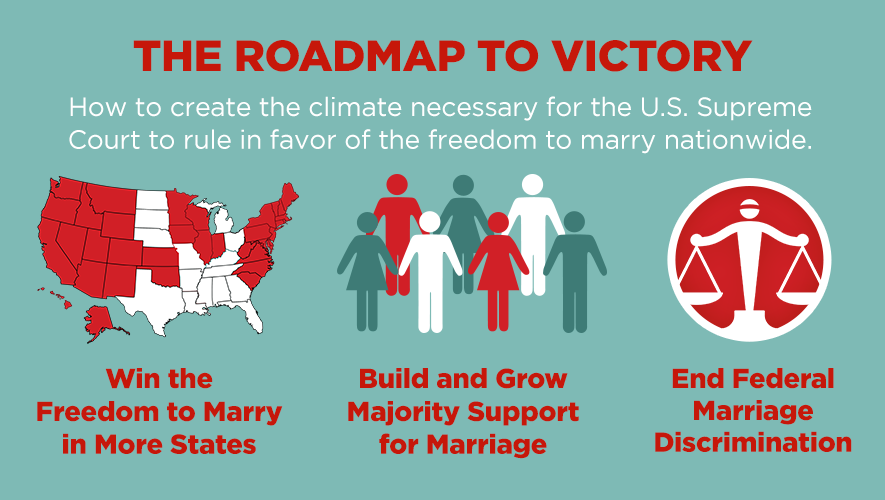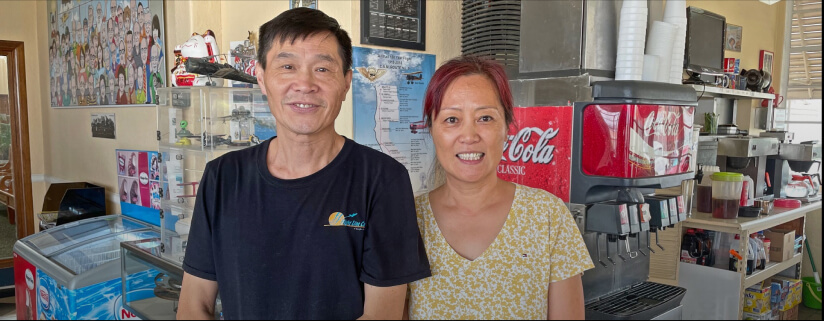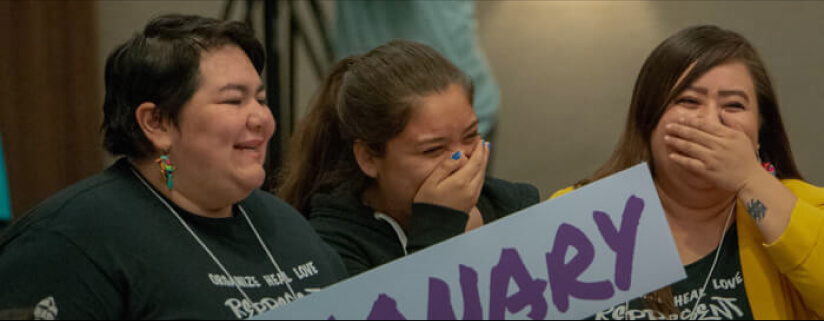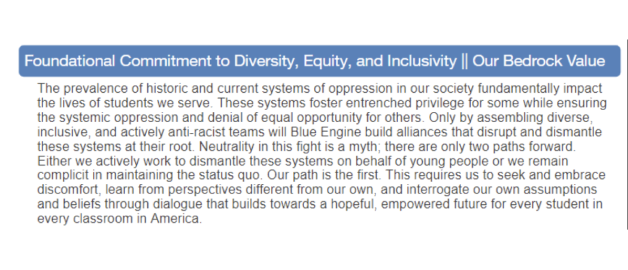Choose an equity dimension
Focus organizational strategy on achieving more equitable outcomes. Listen to constituents and impacted communities.

Foundations
Non-profit
Introduction
A Theory of Change identifies and examines the explicit and implicit assumptions of an organization’s activities to evaluate and refine the strategies and actions that will lead to near-term, intermediate and long-term outcomes for communities served.
A compelling Theory of Change encourages your organization to:
- Identify the most important needs of its intended beneficiaries, through robust data gathering and active listening
- Articulate the most effective and efficient mechanisms to meet those needs and drive greater equity across constituents
- Link your activities to your beneficiaries’ needs through a chain of cause-and-effect relationships that help promote more equitable outcomes
Data is a crucial starting point for developing a strategy for your organization.
Plan
Determine which inequities your organization hopes to address.
The first task is to produce an outcomes statement that specifies the disparities you would like to reduce or eliminate in a given place and timeframe. This means defining, as clearly as possible, the focus of your change effort over the coming months and years.
- Analyze the data you have gathered and use it to determine and prioritize the inequities your organization intends to address.
- To inform priorities and engage community stakeholders, organizations may consider conducting an internal self-assessment and external data gathering. POWER MOVES, from the National Committee for Responsive Philanthropy, provides an internal questions checklist and sample interview/survey questions for community input.
- Draft an outcomes statement that specifies the disparities you would like to reduce or eliminate, clearly defines the goals for and scale of your change effort, and sets anticipated timeframes.. This can be in one, several or all of the dimensions. Each organization’s process may be different and there is no single correct theory of change.
- Is there a specific area of inequality and disparity that you should prioritize?
- At what scale will you seek change? Institutions or organizations? Community? County? State? Region?
- What will “equity” look like in your outcome area? How can you measure achievement of your equity goals?
- What is the timeframe for the anticipated results? Two years? Ten years?
- To eliminate racial disparities in juvenile sentencing in X city/county/region within two years
- To reduce Black and Latino high school dropout rates in X city/county/region by 50 percent within ten years
- To produce X units of affordable, multi-family housing in high performing school districts in Y locations within five years
To inform priorities and engage community stakeholders, organizations may consider conducting an internal self-assessment and external data gathering. POWER MOVES, from the National Committee for Responsive Philanthropy, provides an internal questions checklist and sample interview/survey questions for community input.
Set
Determine the goals to bring about desired outcomes for your beneficiaries.
To achieve sustained community-driven systems change, funders must be prepared to share some of their inherent power and help communities build and wield it themselves. This includes ameliorating or preventing competition between marginalized groups for limited philanthropic resources; supporting advocacy and movement building; and supporting or leading community organizing. Explore POWER MOVES from the National Committee for Responsive Philanthropy.
The Bridgespan Group convened a peer learning group of twelve place-based funders to highlight what they learned by leaning into more equitable giving practices and working alongside the communities they serve. Explore the five-part field report, Race and Place-based Philanthropy: Learnings from Funders Focused on Equitable Impact, for real-world practices and tactics from peer funders.
- Set narrower and more manageable goals that will lead to achievement of your desired outcomes
- To identify the right goals, consider conducting research, engaging the advice of experts, seeking community input, and testing the methodology to increase the likelihood that your work will lead to the desired outcomes
- Also keep in mind the strengths and weaknesses of your organization and where you can have the greatest impact
- Initially, you may come up with more goals than your organization has capacity to handle. Prioritize, accounting for importance, impact and achievability, and pilot/test the goals before scaling or expanding
- For those beyond your capacity, collaborate with other organizations that can take the lead
- Reduction of arrest rates to a proportionate level for white, black and brown youth in the same community or region for any given offense
- A wider menu of positive recreational options for local youth
- Preventive rather than aggressive community policing
- Culturally competent police officers and juvenile justice officials
Source: The Bridgespan Group Race and Place-based Philanthropy: Learnings from Funders Focused on Equitable Impact
Source: National Committee for Responsive Philanthropy POWER MOVES
Review
Consider what might support or impede your efforts to address inequities.
For each building block, identify public policies, institutional practices and cultural representations likely to determine whether or not that building block materializes or stays in place. These policies, practices and representations are the specific things that community-change stakeholders must promote or target to enable the outcomes you seek to produce. Remember to take a cross-sectoral approach. Policies and practices across multiple sectors (e.g., education, housing and employment) often cumulatively reinforce inequities.
- Identify public policies, institutional practices and cultural representations likely to determine whether or not each goal materializes
- Consider the policies, practices and representations that community-change stakeholders must promote or target to enable the outcomes you seek to produce
- Remember to take a cross-sectoral approach. Policies and practices across multiple sectors (e.g., education, housing and employment) often cumulatively reinforce inequities
- Mandatory sentencing laws (policy)
- Prison construction as a rural economic development strategy (policy)
- Public housing regulations requiring eviction of convicted felons (policy)
- Employer practices against hiring individuals with criminal records (practice)
- Pervasive images of inner cities, crime and violence, so that mass incarceration seems inevitable (representation)
Map
Map the change landscape enabling/hindering your building blocks.
- Understand the politics of change in the communities where you work. Stakeholders may be elected officials, interest groups, government bureaucrats, business executives, media and entertainment organizations, unions, opinion leaders, etc.
- Racial equity work is as much political as it is technical and programmatic. Much of it involves building alliances for action, developing public will to support change, and productively countering the resistance you may encounter.
- Who are the key “players” in a given context?
- How does the governance process work at the level you want to engage?
- Who and what are likely to undermine or undo progress toward creating your building blocks?
Example:
Facing significant historical and legal obstacles, the Freedom to Marry movement developed a national strategy to win marriage for same-sex couples and framed the national campaign behind the strategy.

The strategy combined state-based legal efforts with public opinion, culminating in a Supreme Court ruling striking down the Defense of Marriage Act in 2013.
- Does your organization have the will to take on this type of work for a sustained period?
- Do the board, staff and other leaders within your organization share a vision for racial equity that will prioritize this work?
- Does the leadership have the dedication and commitment to take this on?
- Does your organization have the capacity to do what’s necessary to change or promote policies, practices or representations?
Act
Having completed the appropriate planning, research and analysis, which may include some or all of the steps above, determine how your organization should act to bring about desired outcomes.
With this clearer sense of what your organization can do to achieve the desired racial equity outcomes, you can develop a detailed action plan that is both realistic and in line with your social change vision.
- What will be your initial focus?
- What can you initially test, refine and/or assess before taking additional steps to support or grow further?
- What (specifically) do you think you will have accomplished by the end of year one?
- What can your organization achieve in five or ten years? How will you know you have succeeded?
Analytical: deep knowledge of specific policy, legislative and regulatory environments; familiarity with racial dynamics and outcomes of specific institutions; capacity to identify and assess power of narratives, images and other representations linked to race; capacity for strategic thinking
Convening: capacity to bring together disparate stakeholder groups; provide “safe space” for honest discussion with an agenda that moves the process forward to support ongoing learning
Communication: ability to frame information and reach critical audiences in local government, business and civic sectors
Networking: ability to develop, participate in and join formal and informal networks and coalitions; ability to acquire resources through those relationships
Case studies
Introduction
A Theory of Change identifies and examines the explicit and implicit assumptions of an organization’s activities to evaluate and refine the strategies and actions that will lead to near-term, intermediate and long-term outcomes for communities served.
A compelling Theory of Change encourages your organization to:
- Identify the most important needs of its intended beneficiaries, through robust data gathering and active listening
- Articulate the most effective and efficient mechanisms to meet those needs and drive greater equity across constituents
- Link your activities to your beneficiaries’ needs through a chain of cause-and-effect relationships that help promote more equitable outcomes
Data is a crucial starting point for developing a strategy for your organization.
Plan
Determine which inequities your organization hopes to address.
The first task is to produce an outcomes statement that specifies the disparities you would like to reduce or eliminate in a given place and timeframe. This means defining, as clearly as possible, the focus of your change effort over the coming months and years.
- Analyze the data you have gathered and use it to determine and prioritize the inequities your organization intends to address
- To inform priorities and engage community stakeholders, organizations may consider conducting an internal self-assessment and external data gathering. POWER MOVES, from the National Committee for Responsive Philanthropy, provides an internal questions checklist and sample interview/survey questions for community input
- Draft an outcomes statement that specifies the disparities you would like to reduce or eliminate, clearly defines the goals for and scale of your change effort, and sets anticipated timeframes.. This can be in one, several or all of the dimensions. Each organization’s process may be different and there is no single correct theory of change
- Is there a specific area of inequality and disparity that you should prioritize?
- At what scale will you seek change? Institutions or organizations? Community? County? State? Region?
- What will “equity” look like in your outcome area? How can you measure achievement of your equity goals?
- What is the timeframe for the anticipated results? Two years? Ten years?
- To eliminate racial disparities in juvenile sentencing in X city/county/region within two years
- To reduce Black and Latino high school dropout rates in X city/county/region by 50 percent within ten years
- To produce X units of affordable, multi-family housing in high performing school districts in Y locations within five years
Set
Determine the goals to bring about desired outcomes for your beneficiaries.
- Set narrower and more manageable goals that will lead to achievement of your desired outcomes
- To identify the right goals, consider conducting research, engaging the advice of experts, seeking community input, and testing the methodology to increase the likelihood that your work will lead to the desired outcomes
- Also keep in mind the strengths and weaknesses of your organization and where you can have the greatest impact
- Initially, you may come up with more goals than your organization has capacity to handle. Prioritize, accounting for importance, impact and achievability, and pilot/test the goals before scaling or expanding
- For those beyond your capacity, collaborate with other organizations that can take the lead
- Reduction of arrest rates to a proportionate level for white, black and brown youth in the same community or region for any given offense
- A wider menu of positive recreational options for local youth
- Preventive rather than aggressive community policing
- Culturally competent police officers and juvenile justice officials
Review
Consider what might support or impede your efforts to address inequities.
- Identify public policies, institutional practices and cultural representations likely to determine whether or not each goal materializes
- Consider the policies, practices and representations that community-change stakeholders must promote or target to enable the outcomes you seek to produce
- Remember to take a cross-sectoral approach. Policies and practices across multiple sectors (e.g., education, housing and employment) often cumulatively reinforce inequities
- Mandatory sentencing laws (policy)
- Prison construction as a rural economic development strategy (policy)
- Public housing regulations requiring eviction of convicted felons (policy)
- Employer practices against hiring individuals with criminal records (practice) and
- Pervasive images of inner cities, crime and violence, so that mass incarceration seems inevitable (representation)
Map
Map the change landscape enabling/hindering your building blocks.
Understand the politics of change in the communities where you work. Stakeholders may be elected officials, interest groups, government bureaucrats, business executives, media and entertainment organizations, unions, opinion leaders, etc.
Racial equity work is as much political as it is technical and programmatic. Much of it involves building alliances for action, developing public will to support change, and productively countering the resistance you may encounter.
- Does your organization have the will to take on this type of work for a sustained period?
- Do the board, staff and other leaders within your organization share a vision for racial equity that will prioritize this work?
- Does the leadership have the dedication and commitment to take this on?
- Does your organization have the capacity to do what’s necessary to change or promote policies, practices or representations?
- Who are the key “players” in a given context?
- How does the governance process work at the level you want to engage?
- Who and what are likely to undermine or undo progress toward creating your building blocks?
Example:
Facing significant historical and legal obstacles, the Freedom to Marry movement developed a national strategy to win marriage for same-sex couples and framed the national campaign behind the strategy.

The strategy combined state-based legal efforts with public opinion, culminating in a Supreme Court ruling striking down the Defense of Marriage Act in 2013.
Facing significant historical and legal obstacles, the Freedom to Marry movement developed a national strategy to win marriage for same-sex couples and framed the national campaign behind the strategy.

The strategy combined state-based legal efforts with public opinion, culminating in a Supreme Court ruling striking down the Defense of Marriage Act in 2013.
Act
Having completed the appropriate planning, research and analysis, which may include some or all of the steps above, determine how your organization should act to bring about desired outcomes.
With this clearer sense of what your organization can do to achieve the desired racial equity outcomes, you can develop a detailed action plan that is both realistic and in line with your social change vision.
- What will be your initial focus?
- What can you initially test, refine and/or assess before taking additional steps to support or grow further?
- What (specifically) do you think you will have accomplished by the end of year one?
- What can your organization achieve in five or ten years? How will you know you have succeeded?
- Analytical: deep knowledge of specific policy, legislative and regulatory environments; familiarity with racial dynamics and outcomes of specific institutions; capacity to identify and assess power of narratives, images and other representations linked to race; capacity for strategic thinking
- Convening: capacity to bring together disparate stakeholder groups; provide “safe space” for honest discussion with an agenda that moves the process forward to support ongoing learning
- Communication: ability to frame information and reach critical audiences in local government, business and civic sectors
- Networking: ability to develop, participate in and join formal and informal networks and coalitions; ability to acquire resources through those relationships












